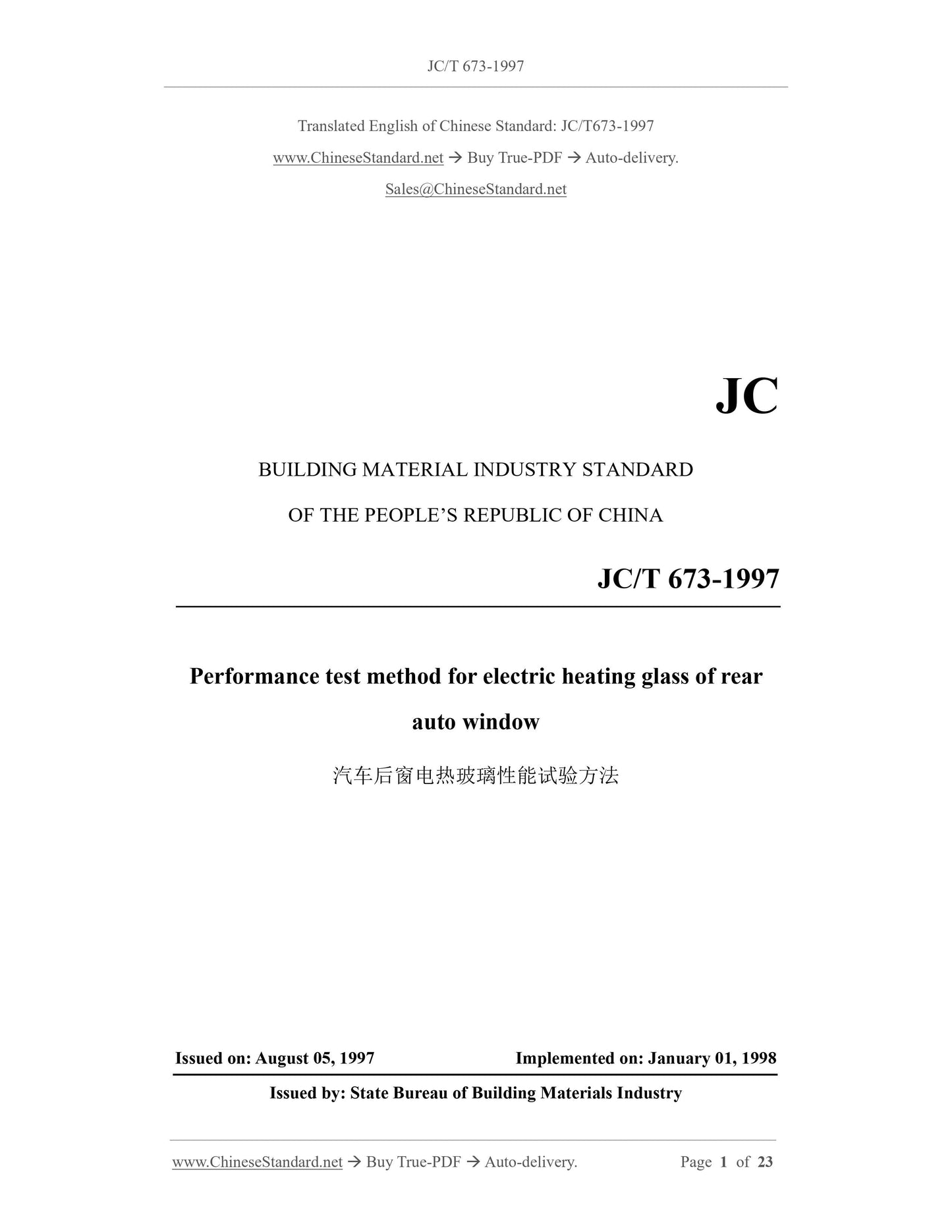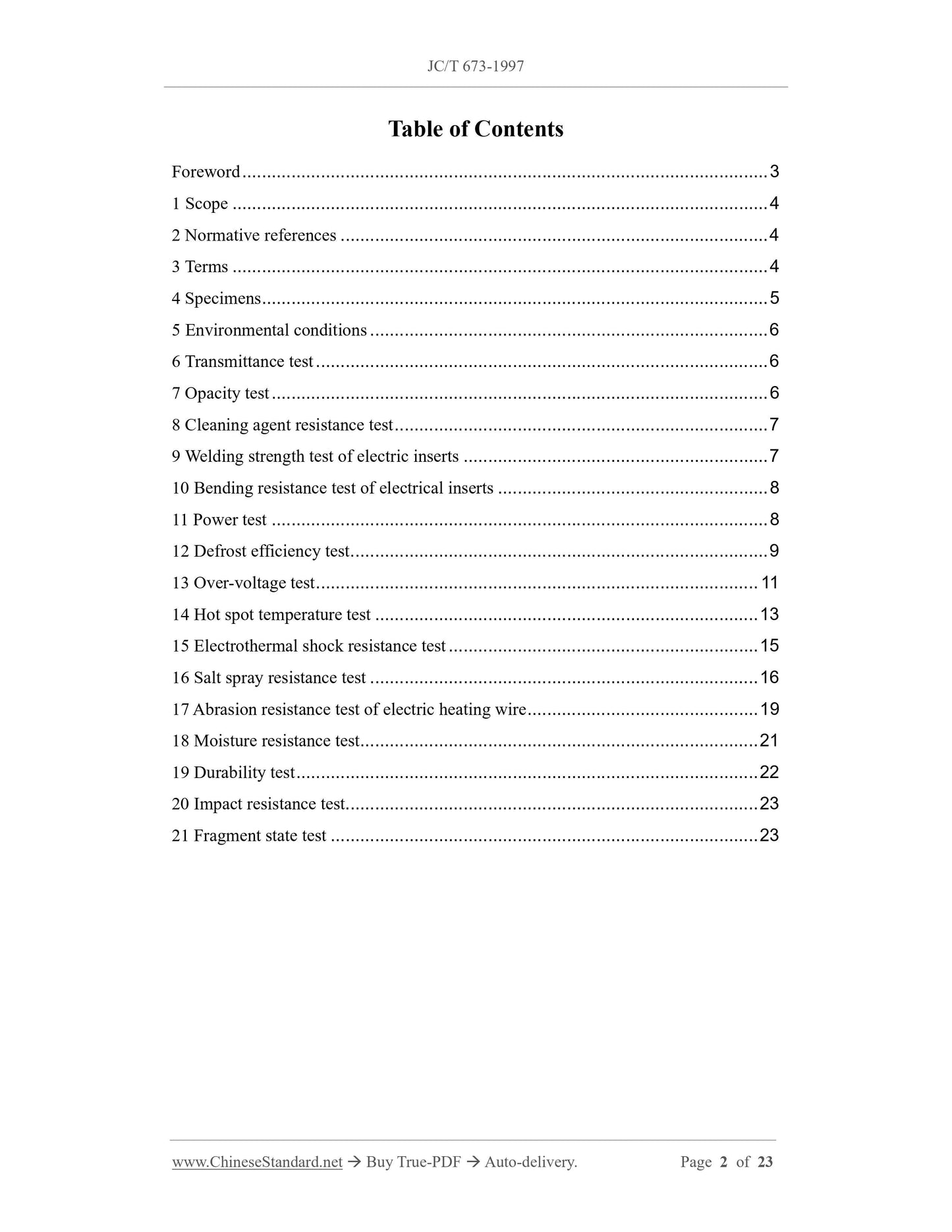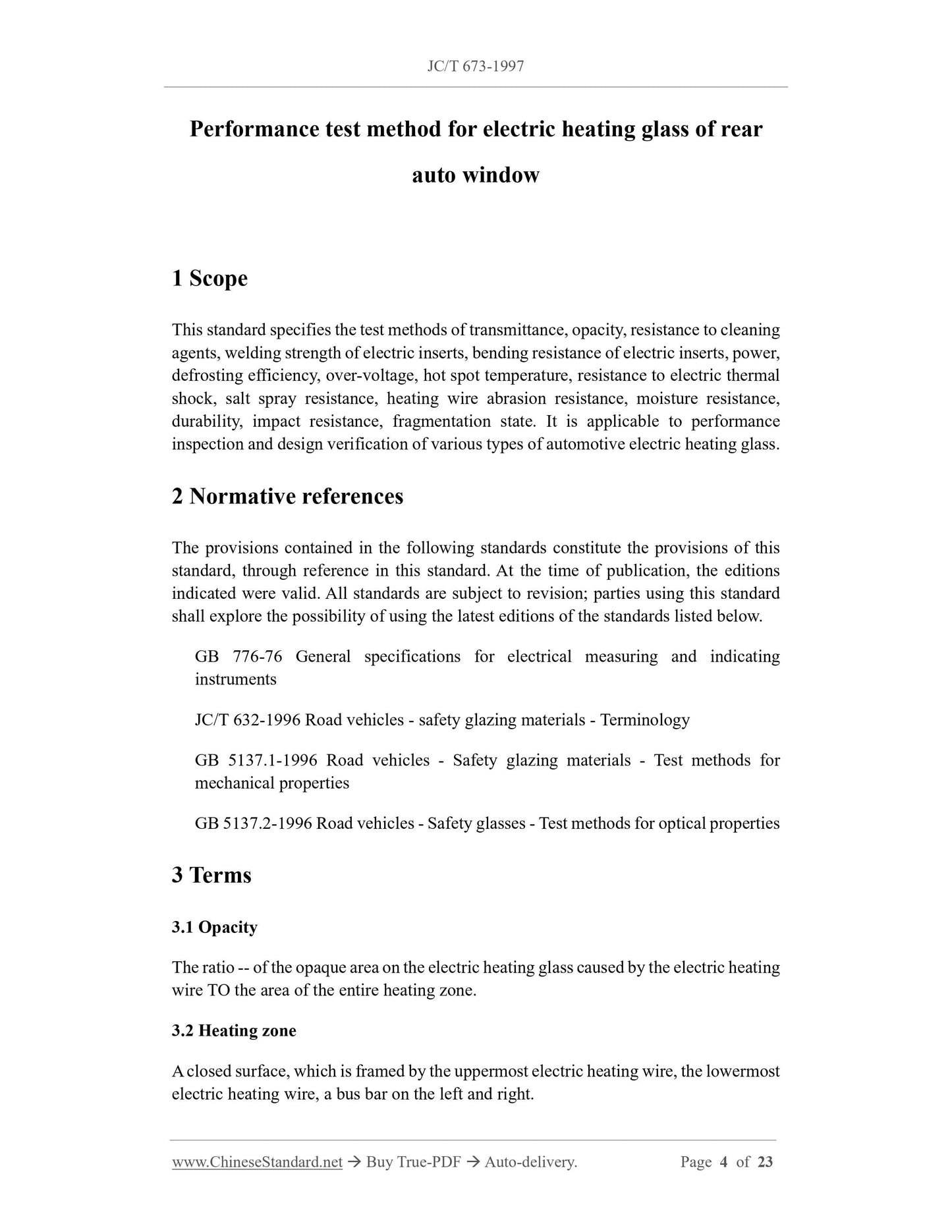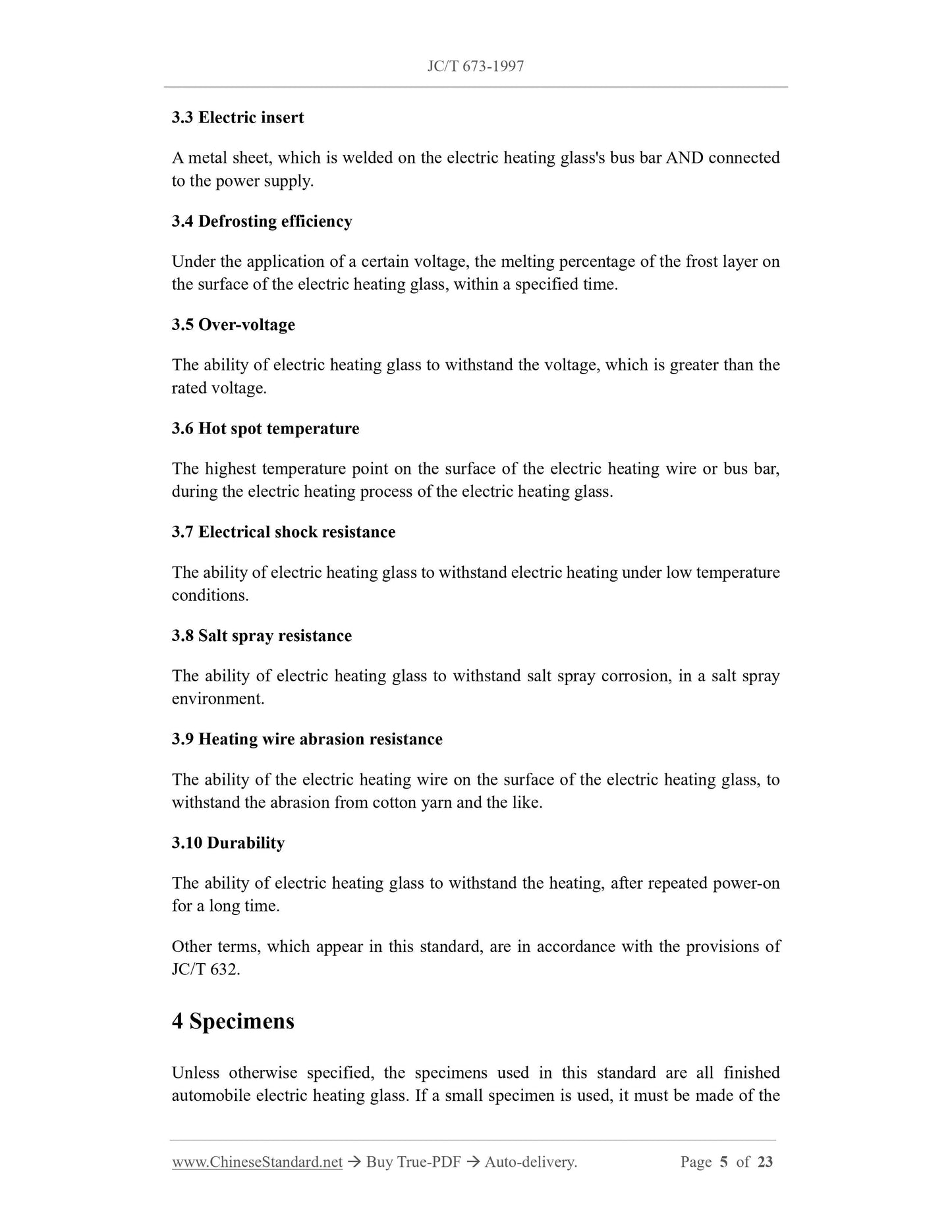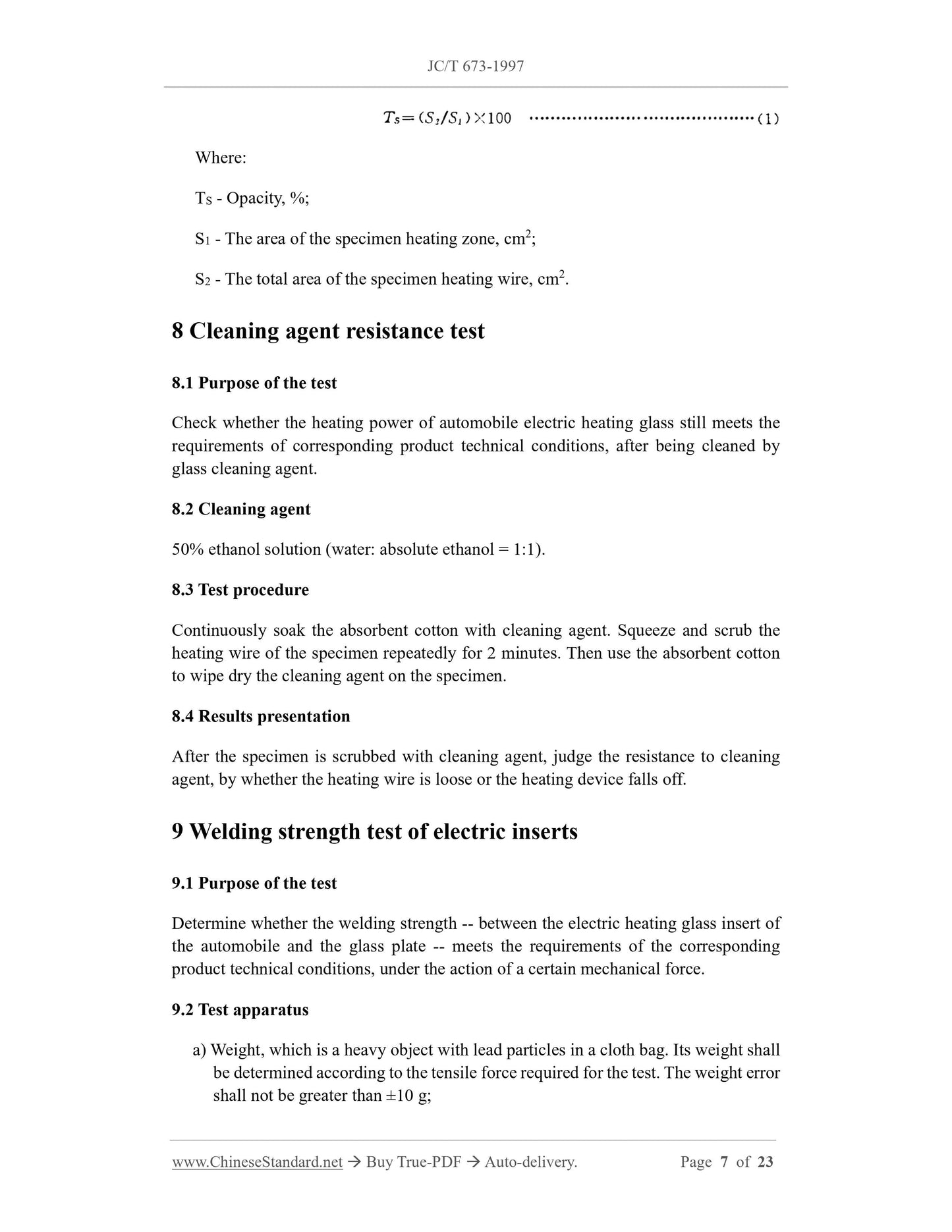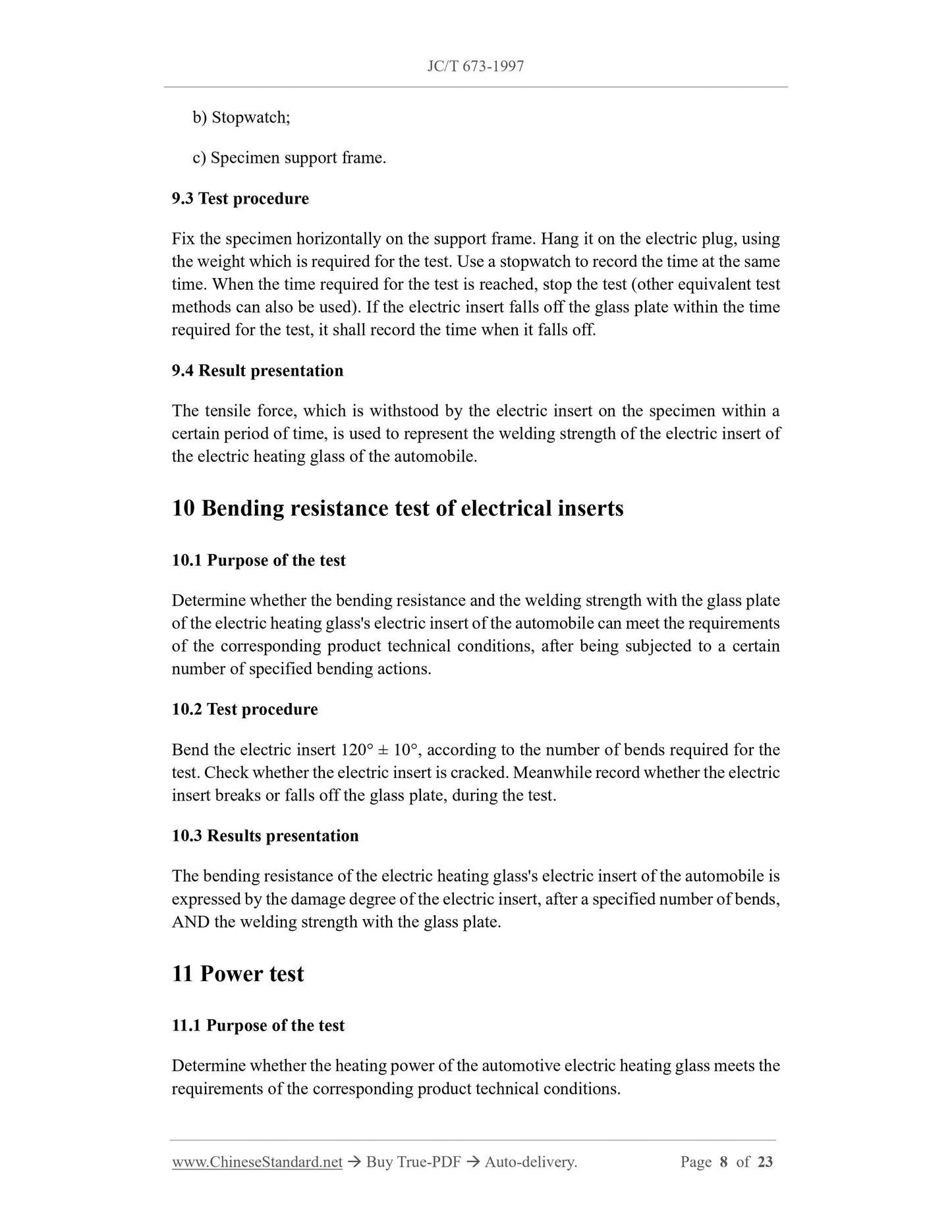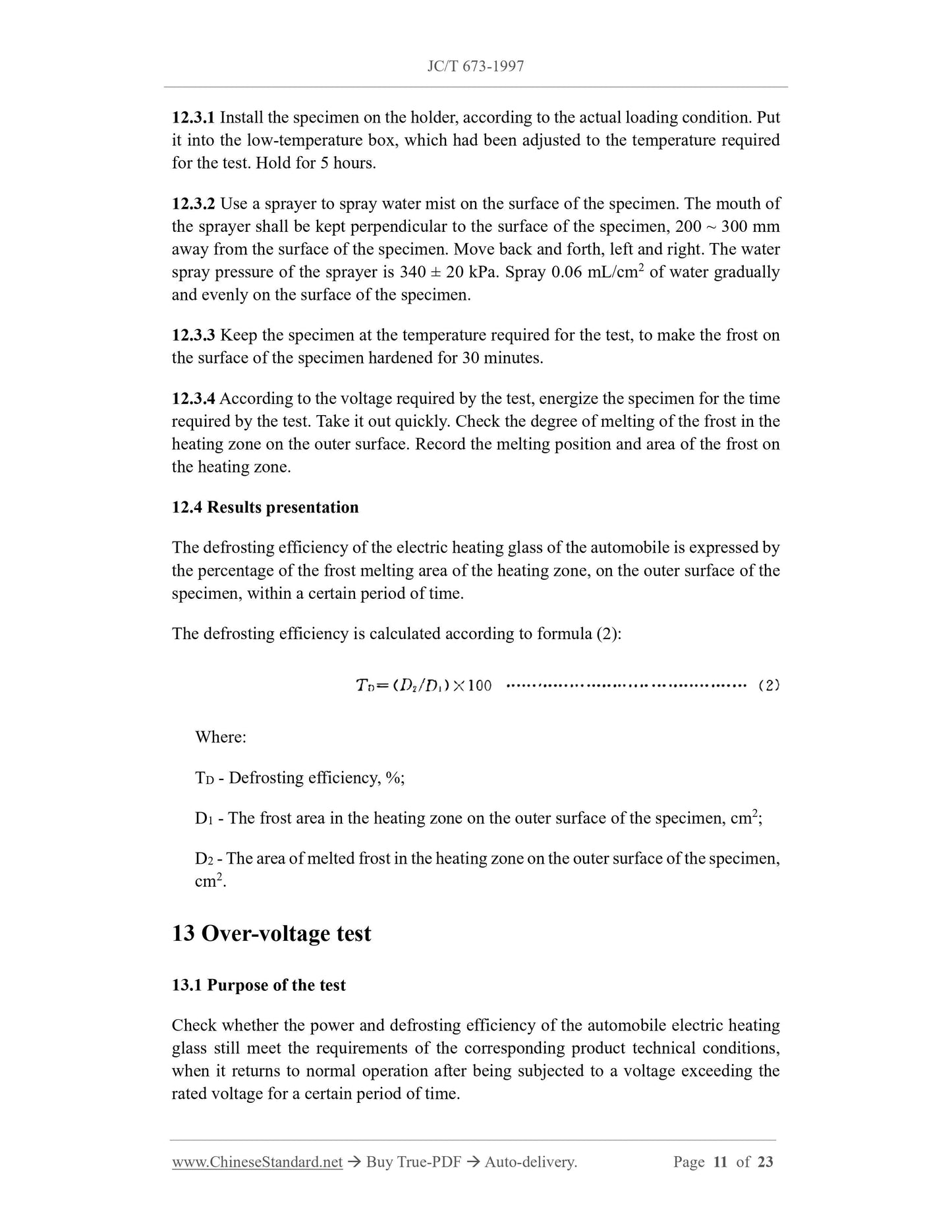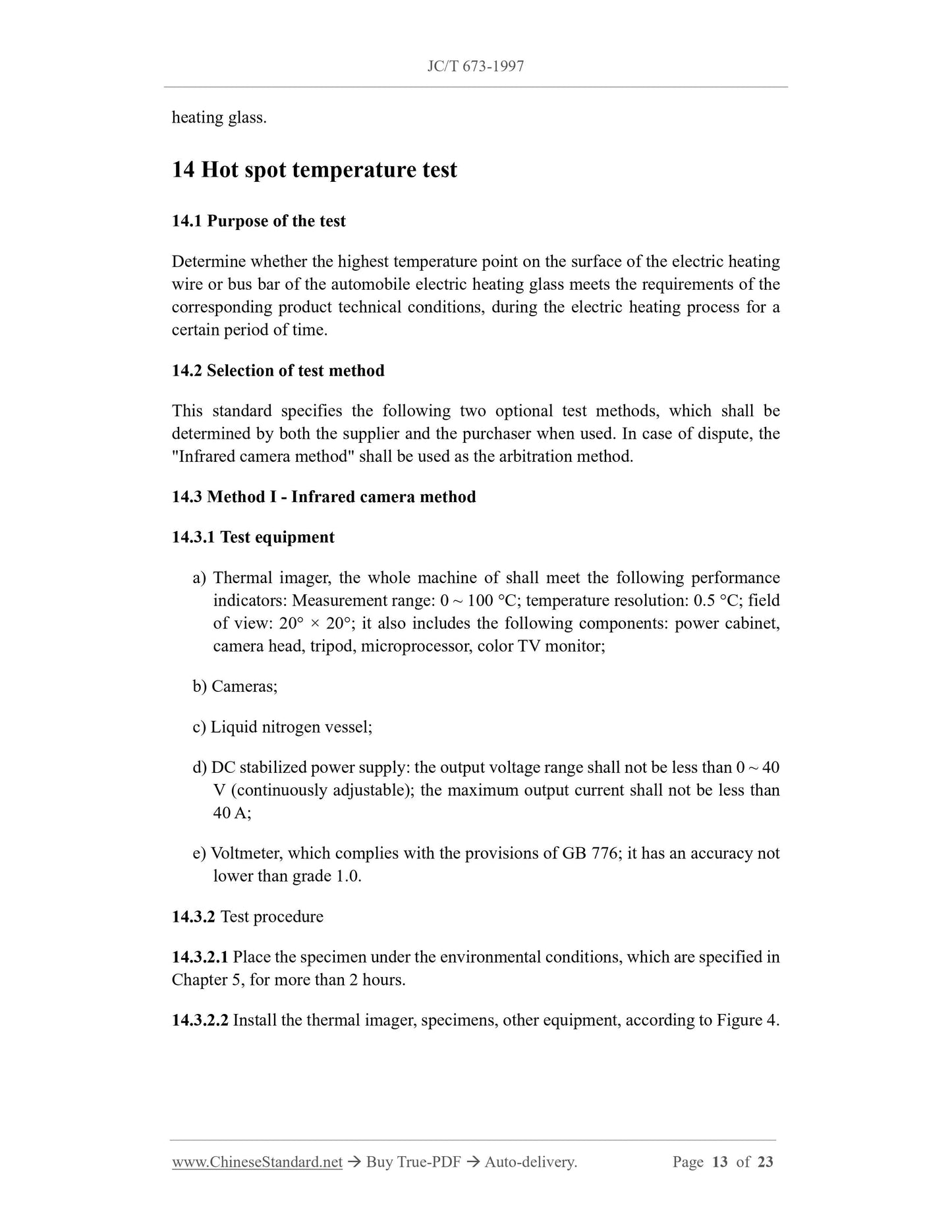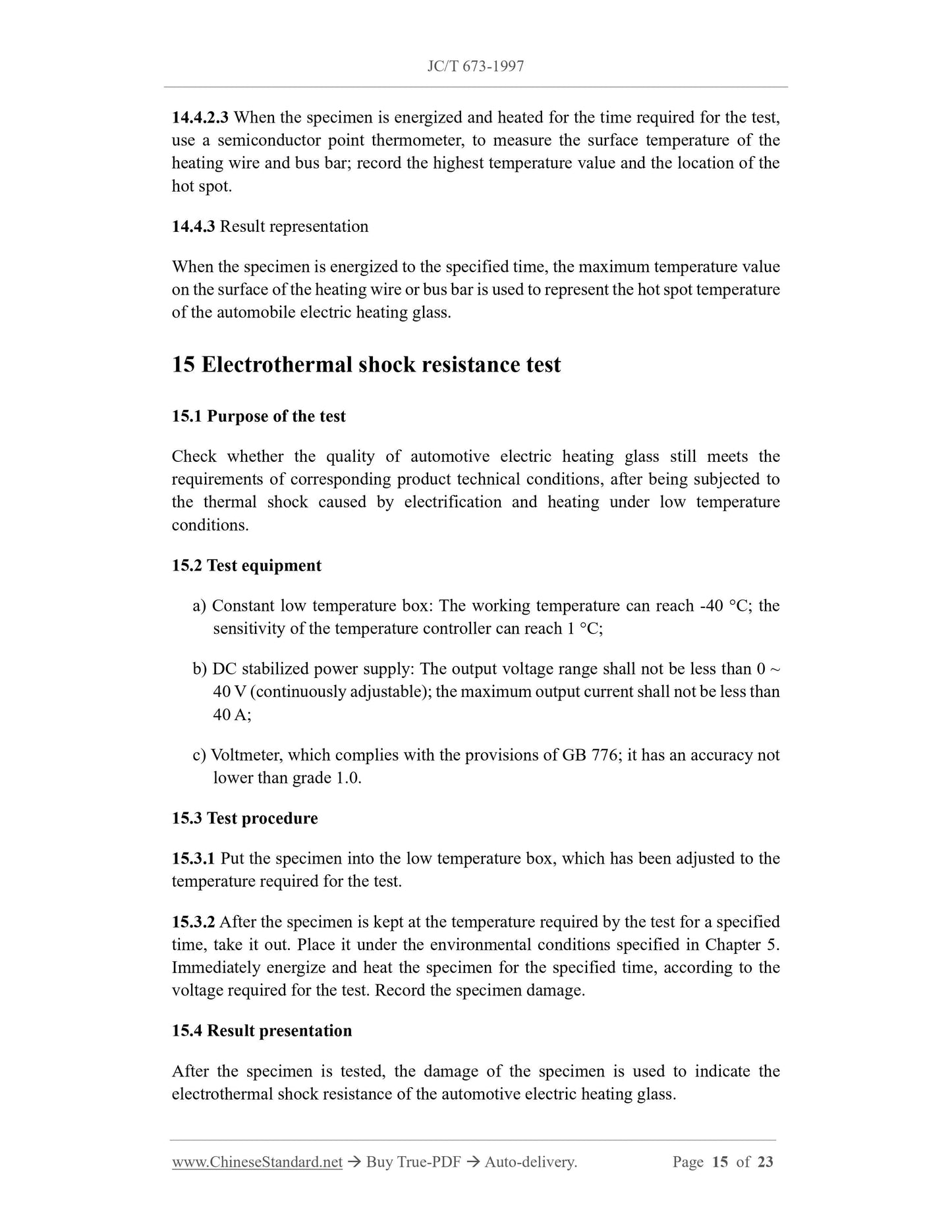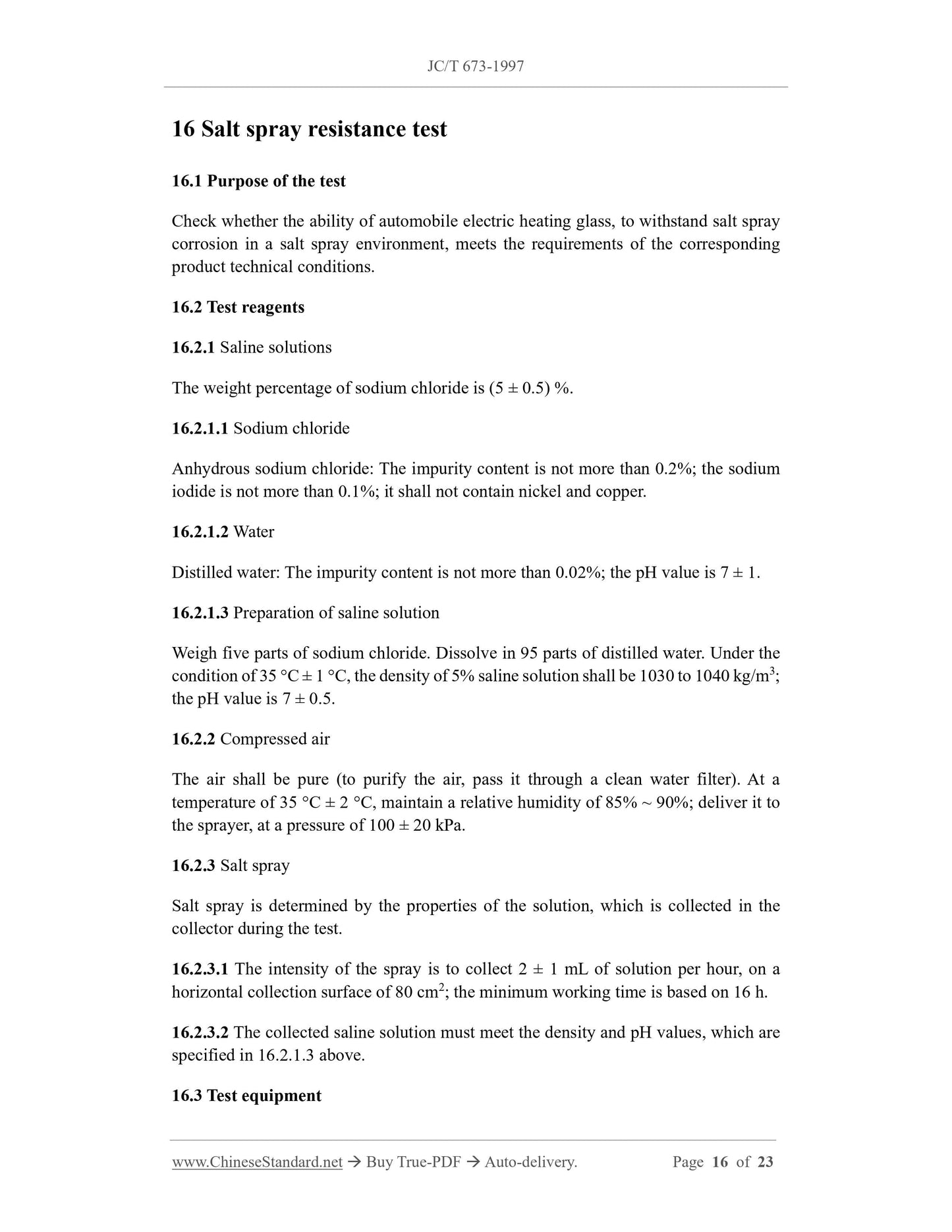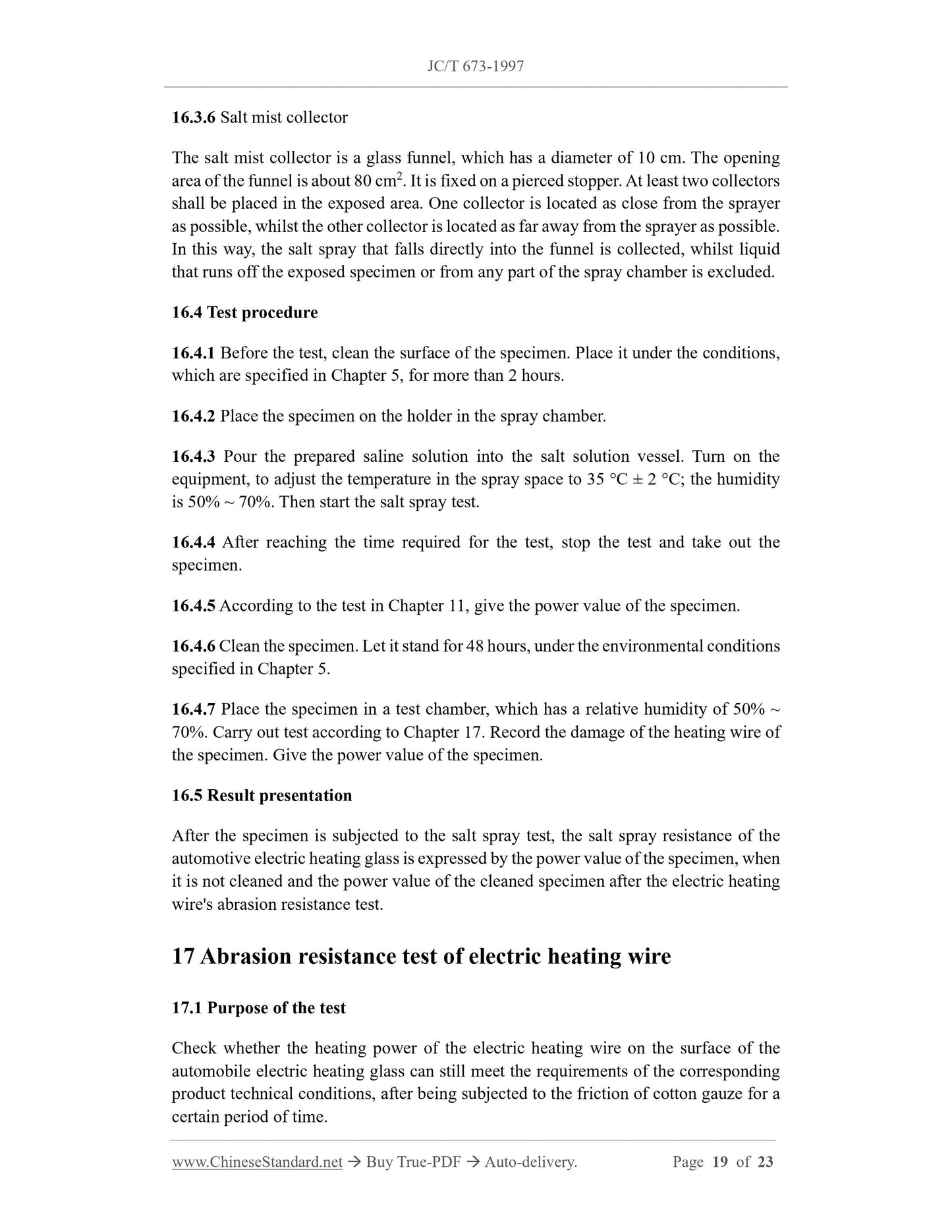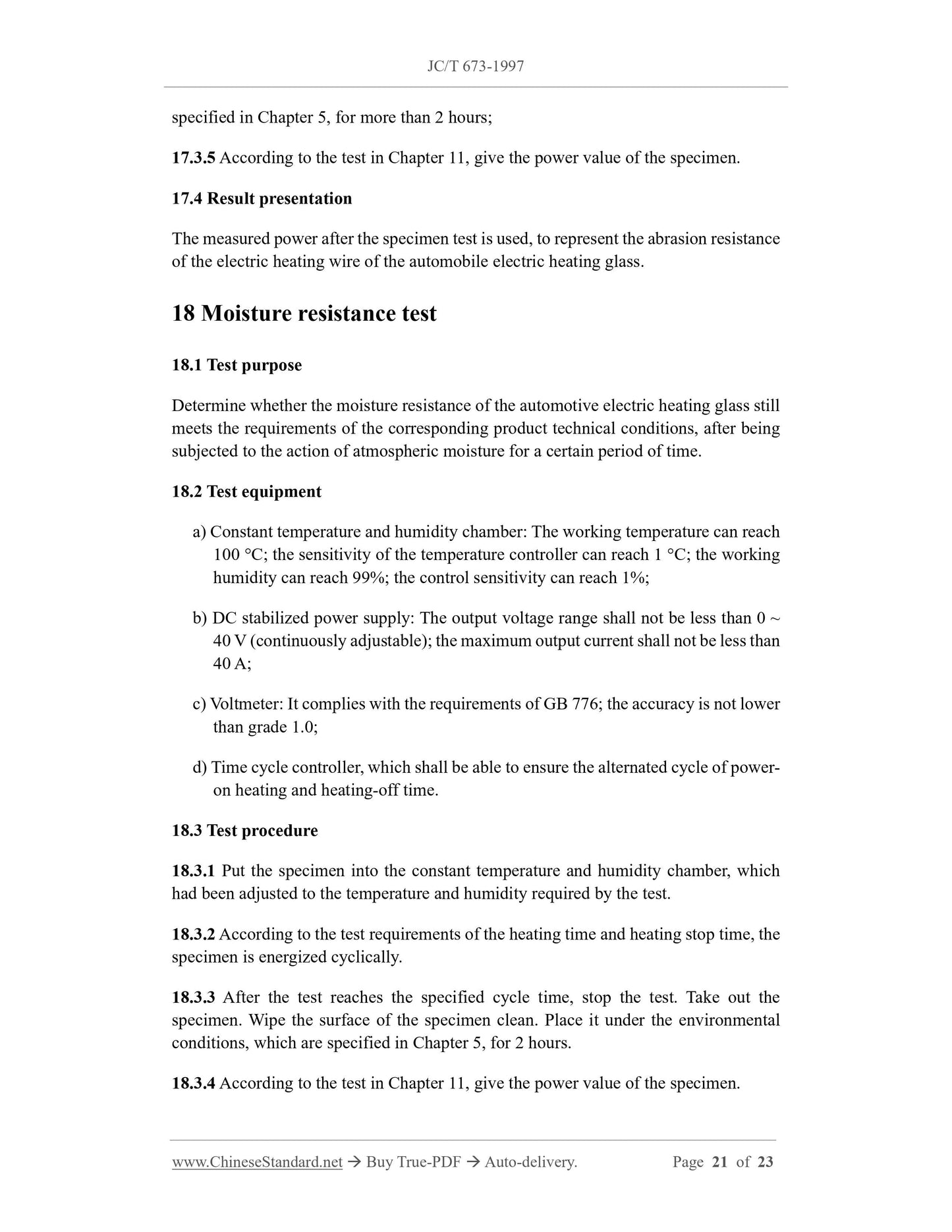1
/
of
12
www.ChineseStandard.us -- Field Test Asia Pte. Ltd.
JC/T 673-1997 English PDF (JC/T673-1997)
JC/T 673-1997 English PDF (JC/T673-1997)
Regular price
$180.00
Regular price
Sale price
$180.00
Unit price
/
per
Shipping calculated at checkout.
Couldn't load pickup availability
JC/T 673-1997: Performance test method for electric heating glass of rear auto window
Delivery: 9 seconds. Download (and Email) true-PDF + Invoice.Get Quotation: Click JC/T 673-1997 (Self-service in 1-minute)
Newer / historical versions: JC/T 673-1997
Preview True-PDF
Scope
This standard specifies the test methods of transmittance, opacity, resistance to cleaningagents, welding strength of electric inserts, bending resistance of electric inserts, power,
defrosting efficiency, over-voltage, hot spot temperature, resistance to electric thermal
shock, salt spray resistance, heating wire abrasion resistance, moisture resistance,
durability, impact resistance, fragmentation state. It is applicable to performance
inspection and design verification of various types of automotive electric heating glass.
Basic Data
| Standard ID | JC/T 673-1997 (JC/T673-1997) |
| Description (Translated English) | Performance test method for electric heating glass of rear auto window |
| Sector / Industry | Building Materials Industry Standard (Recommended) |
| Classification of Chinese Standard | Q34 |
| Classification of International Standard | 81.040.10 |
| Word Count Estimation | 16,146 |
| Date of Issue | 8/5/1997 |
| Date of Implementation | 1/1/1998 |
| Quoted Standard | GB 5137.1-1996; GB 5137.2-1996; GB 776-1976; JC/T 632-1996, |
| Regulation (derived from) | Industry-Science (2010) No. 77 |
| Summary | This standard specifies the electric car rear window glass transmittance, opaque rates, resistance to cleaning agents, electrical inserts weld strength, electrical inserts bending resistance, power, defrosting efficiency, ultra-pressure, hot temperature resistance, electric shock, salt spray resistance, abrasion resistance hotline, wet moisture, durability, impact resistance test methods and debris-resistant state; applicable to all types of automotive glass electric performance testing and design verification. |
Share
